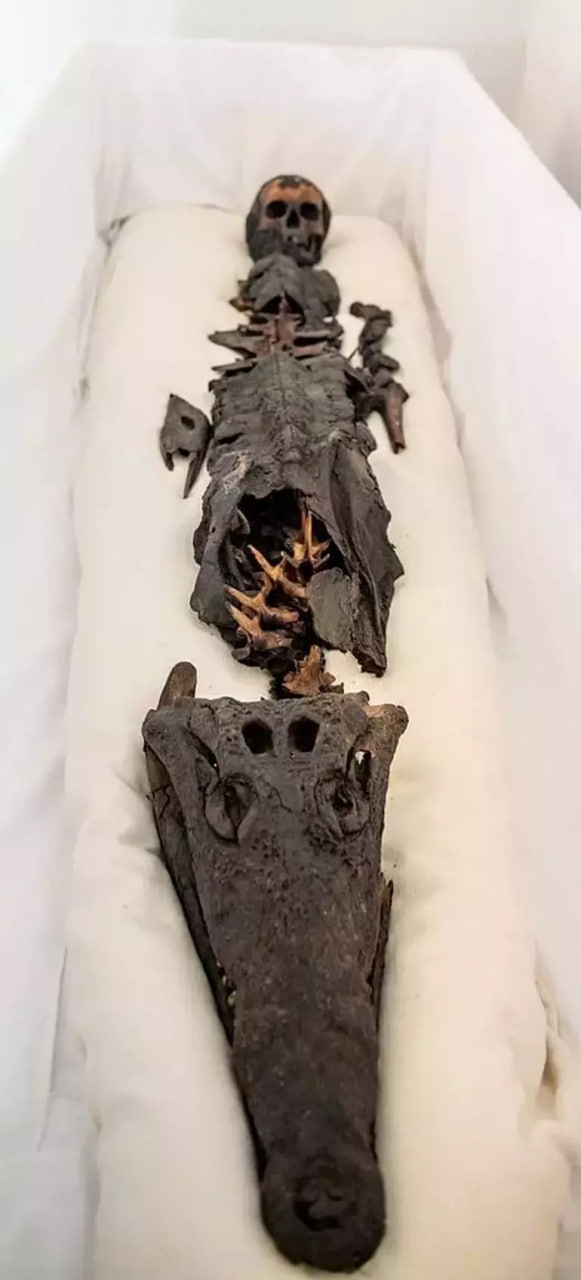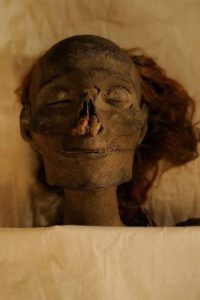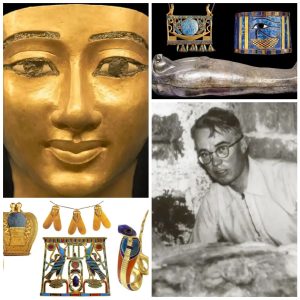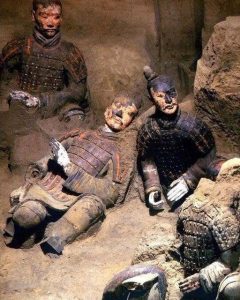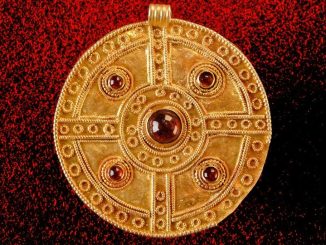The two-headed mummy that stirred panic in Ottoman palace
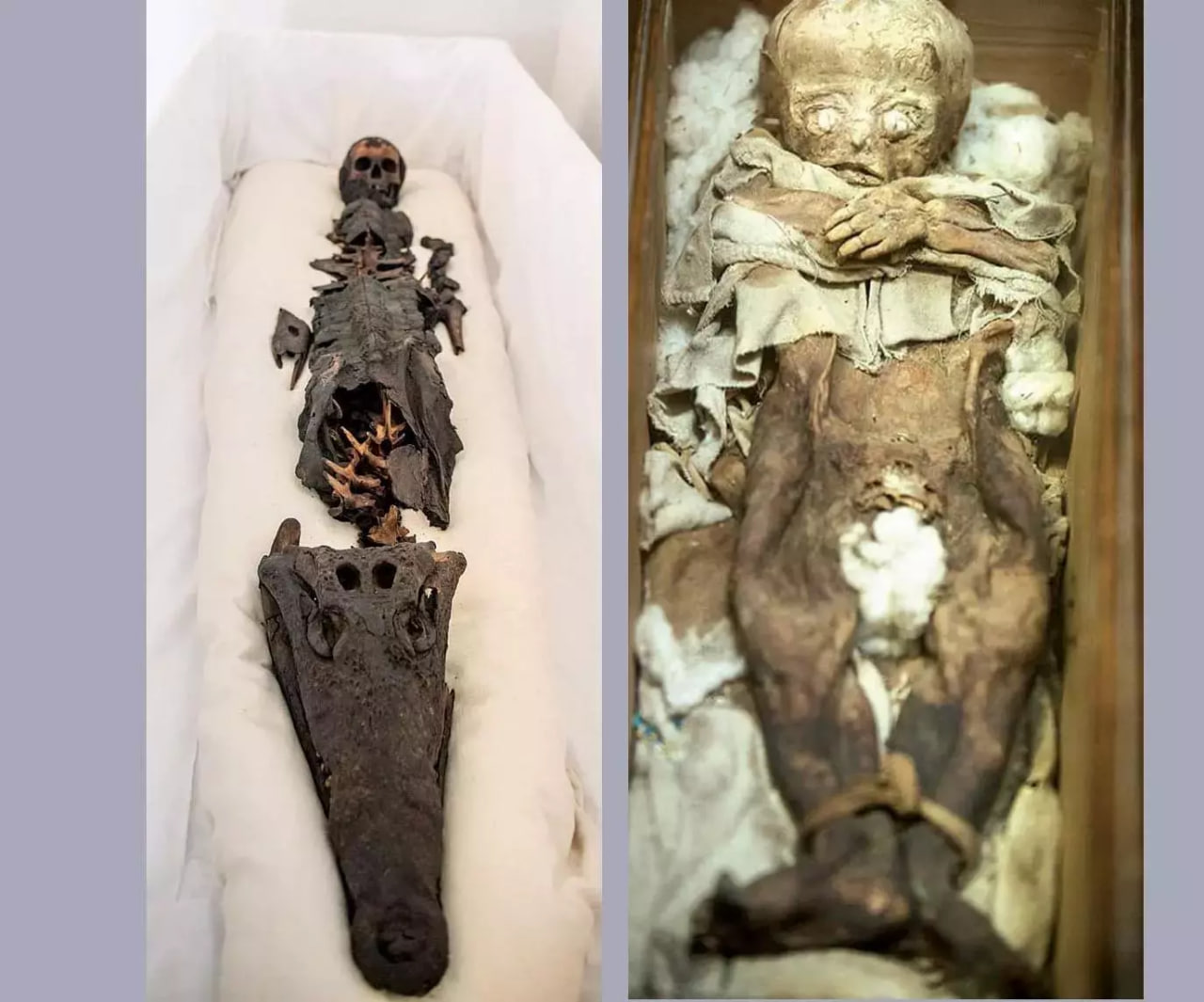
Two-headed Egyptian mummy in the Topkapı Palace Museum (L) and the mummy of child in Istanbul’s Archaeological Museum (R), where five more mummies can also be found.
An ancient Egyptian mummy with two heads, belonging to a human child and a crocodile, has been photographed for the first time on July 6, after more than a century of its “exile” ordered by the Ottoman Sultan Abdulhamid II.
Turkish officials has recently issued permit for daily Hürriyet to film the only mummy kept at Istanbul’s Topkapı Palace.
Despite its unusual appearance and interesting story, the Topkapı mummy has been far from the public eye, unlike six other mummies kept at Istanbul Archaeology Museum, which belong to relatively more important historical figures, like the Sidon King Tabnit.
According to Turkish experts speaking to daily Hürriyet, the Topkapı mummy was composed of the head of an unidentified ancient Egyptian princess and the head and body of a Nile crocodile.
The legend says the Pharaonic Egypt’s princess was killed by a crocodile in the Nile and the rulers of the time decided to combine the two bodies with the belief that the kid would be resurrected in the afterlife as a crocodile.
The mummy was brought from Egypt to Turkey during the rule of Ottoman Sultan Abdulaziz in the mid-1800s. It was kept at Yıldız Palace in Istanbul, which was the sultan’s official residence at the time, until Abdulhamid II “exiled” it to the older palace of Topkapı.
Turkish historian İbrahim Hakkı Konyalı wrote in the 1950s an anecdote about the mummy. According to Konyalı, the residents of Yıldız Palace were scared one night when they heard loud bangs coming from the sugar storage of the complex and found the crocodile head on top of sacks.
It was merely a joke made by the palace servant Hacı Süleyman, who wanted to take revenge from the royal candy maker who refused his requests, the historian wrote.
On the panic night at the palace, Hacı Süleyman told everyone that he could get rid of the mummy, only if he was given the candies he wanted. The palace administration agreed and Hacı Süleyman simply took the head that he placed on sugar sacks and put back on the mummy body, which was kept in the cold room.
Hacı Süleyman got the candies he wanted and the mummy was sent to exile by the sultan to relieve the palace residents, according to the historian.
